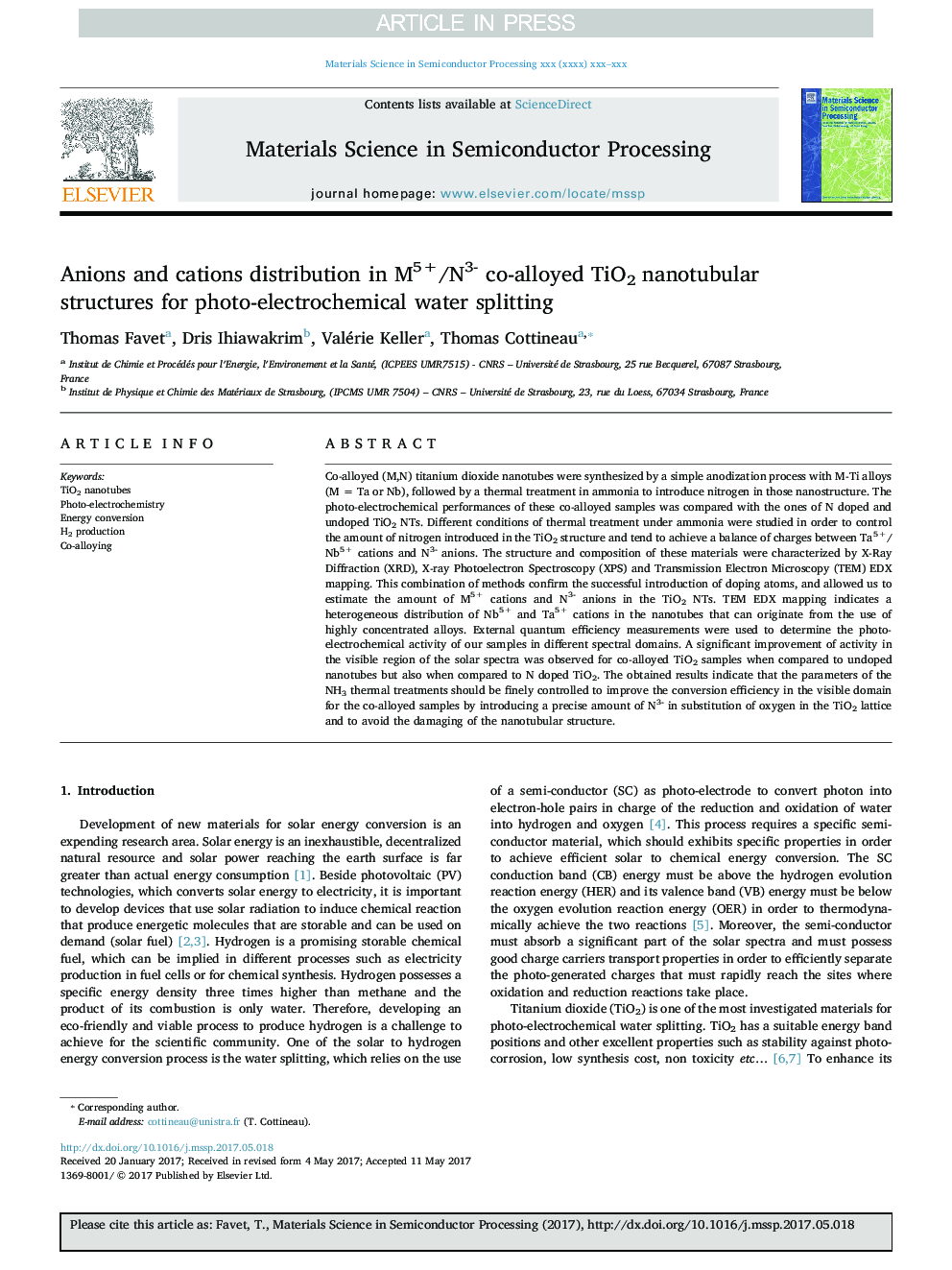| کد مقاله | کد نشریه | سال انتشار | مقاله انگلیسی | نسخه تمام متن |
|---|---|---|---|---|
| 7118187 | 1461374 | 2018 | 8 صفحه PDF | دانلود رایگان |
عنوان انگلیسی مقاله ISI
Anions and cations distribution in M5+/N3- co-alloyed TiO2 nanotubular structures for photo-electrochemical water splitting
دانلود مقاله + سفارش ترجمه
دانلود مقاله ISI انگلیسی
رایگان برای ایرانیان
کلمات کلیدی
موضوعات مرتبط
مهندسی و علوم پایه
سایر رشته های مهندسی
مهندسی برق و الکترونیک
پیش نمایش صفحه اول مقاله

چکیده انگلیسی
Co-alloyed (M,N) titanium dioxide nanotubes were synthesized by a simple anodization process with M-Ti alloys (M = Ta or Nb), followed by a thermal treatment in ammonia to introduce nitrogen in those nanostructure. The photo-electrochemical performances of these co-alloyed samples was compared with the ones of N doped and undoped TiO2 NTs. Different conditions of thermal treatment under ammonia were studied in order to control the amount of nitrogen introduced in the TiO2 structure and tend to achieve a balance of charges between Ta5+/Nb5+ cations and N3- anions. The structure and composition of these materials were characterized by X-Ray Diffraction (XRD), X-ray Photoelectron Spectroscopy (XPS) and Transmission Electron Microscopy (TEM) EDX mapping. This combination of methods confirm the successful introduction of doping atoms, and allowed us to estimate the amount of M5+ cations and N3- anions in the TiO2 NTs. TEM EDX mapping indicates a heterogeneous distribution of Nb5+ and Ta5+ cations in the nanotubes that can originate from the use of highly concentrated alloys. External quantum efficiency measurements were used to determine the photo-electrochemical activity of our samples in different spectral domains. A significant improvement of activity in the visible region of the solar spectra was observed for co-alloyed TiO2 samples when compared to undoped nanotubes but also when compared to N doped TiO2. The obtained results indicate that the parameters of the NH3 thermal treatments should be finely controlled to improve the conversion efficiency in the visible domain for the co-alloyed samples by introducing a precise amount of N3- in substitution of oxygen in the TiO2 lattice and to avoid the damaging of the nanotubular structure.
ناشر
Database: Elsevier - ScienceDirect (ساینس دایرکت)
Journal: Materials Science in Semiconductor Processing - Volume 73, January 2018, Pages 22-29
Journal: Materials Science in Semiconductor Processing - Volume 73, January 2018, Pages 22-29
نویسندگان
Thomas Favet, Dris Ihiawakrim, Valérie Keller, Thomas Cottineau,